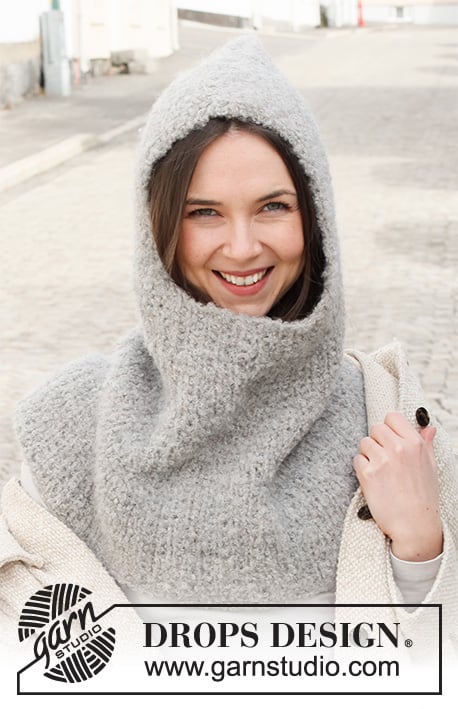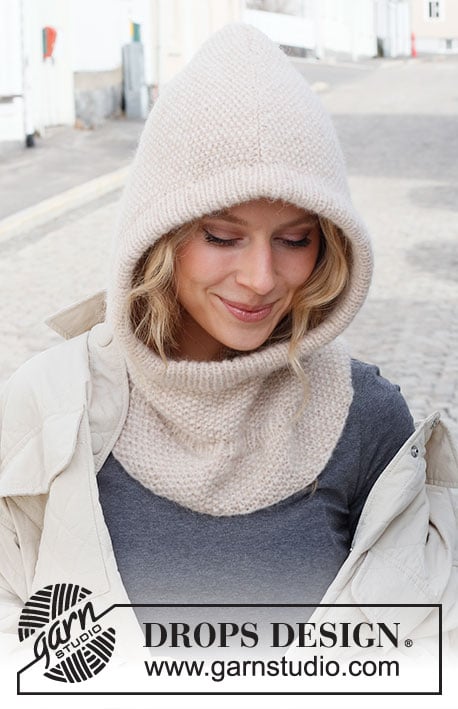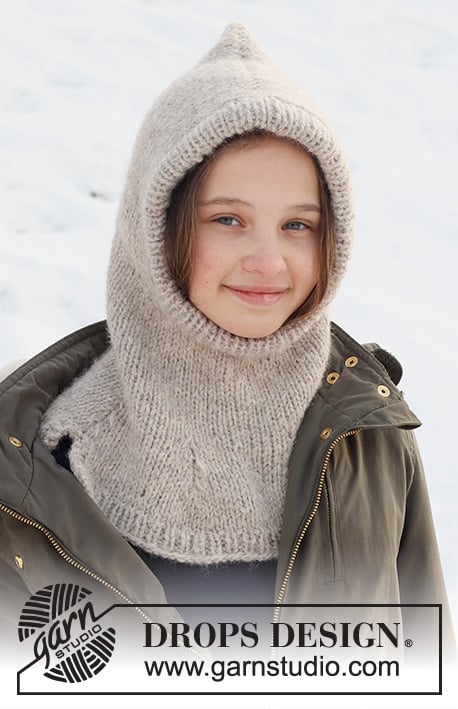20 Free Balaclava Knitting Patterns (Warm + Cozy)
THIS ARTICLE CONTAINS AFFILIATE LINKS THAT SUPPORT HANDY LITTLE ME CONTENT AND FREE PATTERNS.This blog post will show 20 free balaclava knitting patterns (warm + cozy).
Whether you’re looking for a quick gift, a stylish hat for outdoor activities, or a functional piece to keep you warm during the cold months, this collection has something for everyone.
Each pattern features different styles, including options for different yarn weights and colors.
You’ll find step-by-step instructions, beginner-friendly options, and even some more advanced designs for those looking to challenge their skills.
Grab your knitting needles and get ready to create your own unique balaclava that will keep you warm and fashionable all winter long!

20 Free Balaclava Knitting Patterns
If you are ready to make your own balaclava, check out the free pattern below for inspiration.
Happy Knitting!
Balaclava Pattern {Bulky Knit}
This simple and stylish balaclava is made with bulky yarn, ensuring warmth and quick results.
It features a snug, stretchy fit with ribbed detailing around the face opening for added comfort.
Perfect for beginners, it’s an easy and functional project for cold weather.
All you need is three skeins of bulky-weight yarn and 8 mm needles.
Uncharted Territory by DROPS Design
This versatile balaclava pattern includes ribbing for a snug fit and stockinette for a sleek, modern design.
It’s ideal for layering under winter gear, offering both warmth and a clean aesthetic.
The pattern provides step-by-step instructions suitable for intermediate knitters.
Ronja Balaclava by Arne & Carlos
The Ronja pattern offers a sophisticated take on the classic balaclava with a textured finish.
Designed for warmth and style, it features a tailored fit around the neck and face.
It’s a great choice for knitters looking for a practical yet chic winter accessory.
Grab the free PDF on Ravelry.
Free Red Heart Character Knit Balaclava Pattern by Yarnspirations
This playful balaclava pattern transforms into a fun character design, perfect for a toddler, kids, or whimsical adults.
Made with soft, durable yarn, it’s both practical and entertaining.
The pattern includes clear instructions for creating adorable details like ears or other embellishments.
Grab the free PDF on Yarnspirations.
Catherine Balaclava by Mieke Van Damme
This elegant balaclava features a minimalist design with a focus on comfort and functionality.
Knit with a blend of ribbing and stockinette, it provides a snug, stylish fit for everyday wear. Ideal for knitters of all levels, it’s a timeless winter accessory.
Grab the free PDF on Ravelry.
Antifreeze Balaclava by Jenna Adorno
This detailed pattern from Knitty provides an advanced-level balaclava that’s designed for extreme cold.
Featuring intricate stitch work and shaping, it’s perfect for outdoor enthusiasts.
The pattern ensures a close, protective fit to keep you warm in harsh conditions.
Check out the free pattern on Knitty.
Balaclava Pattern by Crazy Hands
This beginner-friendly pattern uses chunky yarn for a fast, warm, and stretchy balaclava.
The design features a ribbed face opening and a cozy neck covering, making it practical for outdoor winter activities.
Clear instructions make it accessible to newer knitters.
Wrapped in Wonder by DROPS Design
This pattern combines a classic fit with subtle textured detailing, making it both practical and stylish.
The ribbed sections ensure flexibility and a snug fit around the face and neck.
Suitable for beginners, it’s a great way to practice simple techniques.
Auden Balaclava Knit by Lion Brand Yarns
This modern balaclava is designed with a slouchy, relaxed fit and a cozy neck section.
Made with soft, lightweight yarn, it’s ideal for layering or as a stand-alone piece.
The pattern is simple, making it a great project for intermediate knitters.
Grab the free PDF on Lion Brand.
Polar Play by DROPS Design
This balaclava is designed for warmth and elegance, featuring a fitted silhouette with ribbing for added texture.
It’s knit in worsted weight yarn, offering a balance between structure and softness.
The pattern is perfect for intermediate knitters seeking a timeless design.
Frost Buster Balaclava by DROPS Design
This pattern offers a straightforward and versatile balaclava, perfect for everyday winter wear.
It features a soft, stretchy ribbed section around the face and a smooth stockinette body.
Great for beginners, it’s an ideal project for practicing basic techniques.
Bernat Striped Knit Balaclava by Yarnspirations
This colorful striped balaclava is both fun and functional, featuring a bold, graphic design.
The pattern uses soft, durable yarn and provides instructions for a close-fitting neck and face opening.
Ideal for all skill levels, it adds a pop of personality to winter gear.
Grab the free PDF on Yarnspirations.
Patons Knit Haute Hood by Yarnspirations
This stylish hooded balaclava combines fashion and function with its loose, elegant drape.
It’s perfect for layering over winter outfits, offering warmth without sacrificing style.
The pattern is beginner-friendly, making it an excellent introduction to hooded knits.
Grab the free PDF on Yarnspirations.
Little Winter Knight by DROPS Design
This snug and stretchy balaclava features a classic design with ribbing around the face and neck for added warmth.
It’s knit with worsted weight yarn, ensuring a cozy yet lightweight finish.
The pattern is straightforward, making it ideal for knitters of all levels.
Luna Azul by DROPS Design
This pattern provides a sleek, modern balaclava with a seamless design and smooth texture.
It’s great for layering under helmets or winter gear, offering maximum comfort and warmth.
The pattern is beginner-friendly and quick to complete.
Tromsø Hoodie by Sisu Knitwear
This pattern combines a traditional hoodie with balaclava functionality, featuring a fitted face opening and loose neck.
It’s designed for maximum warmth and comfort, making it great for cold climates.
The instructions are detailed, catering to intermediate knitters.
Grab the free PDF on Ravelry.
Warm Winter Hood by Lee Meredith
This cozy hoodie-style balaclava features a relaxed fit with a draped neck section for added coverage.
The pattern is beginner-friendly and works up quickly with worsted or bulky yarn.
It’s perfect for staying warm and stylish during chilly winter days.
Grab the free PDF on Knit Picks.
Warm Snuggles Kids by DROPS Design
This classic balaclava pattern features a cozy, fitted design with ribbed detailing for added stretch and comfort.
Perfect for cold-weather activities, it offers excellent coverage for the head, neck, and face while remaining lightweight and breathable.
Suitable for knitters of all levels, this straightforward project is a practical and stylish winter essential.
BB Balaclava pattern by Jung min Choi
The BB Balaclava is a sleek and modern knitting pattern designed to keep you warm in style.
Featuring a minimalist design with a snug fit, this versatile accessory is perfect for chilly weather.
The pattern is worked in a combination of ribbing and stockinette stitch, offering a satisfying project for knitters of all skill levels.
Ideal for layering under coats or wearing on its own, the BB Balaclava is both functional and fashionable—perfect for outdoor adventures or adding a trendy touch to your winter wardrobe.
DROPS 116-26 by DROPS Design
This simple yet effective balaclava pattern offers a snug fit and a clean, minimalist design.
It’s perfect for keeping warm during winter outdoor activities layering easily under other gear.
The pattern is accessible for beginners and produces a timeless piece.
Everything You Need To Know About Knitting Balaclavas
Is it easy to knit a balaclava?
Knitting a balaclava can be easy or moderately challenging, depending on the pattern and your knitting experience.
Simple patterns using chunky yarn and basic stitches like knit and purl are beginner-friendly and can be completed quickly.
However, more complex designs may involve shaping for the face opening, decreases for the crown, or ribbing for a snug fit, which can be slightly more advanced.
With a clear pattern and some patience, even newer knitters can create a balaclava, making it a rewarding project to keep you cozy and stylish in colder weather!
Related Post: How To Knit – A Complete Beginner’s Guide
How many balls of yarn does it take to make a balaclava?
The amount of yarn needed to knit a balaclava depends on the pattern, the size, and the type of yarn used.
On average, you’ll need 1 to 2 balls (100-200 grams) of yarn.
Here’s a general breakdown:
- Bulky or Chunky Yarn: Requires less yardage (100–150 grams or about 100–150 meters). Usually, one ball is sufficient.
- Worsted Weight Yarn: May require closer to 150–200 grams (about 200–300 meters), which could mean two balls.
- Fine or DK Weight Yarn: You might need 200 grams or more (300+ meters) depending on the complexity and size.
Always check your pattern for exact yardage recommendations, and it’s a good idea to have a little extra in case of mistakes or gauge differences.
Related Post: How Much Yarn Do I Need For A Knitting Project?
How many stitches do you cast on a balaclava?
The number of stitches you cast on for a balaclava depends on the pattern, the yarn weight, and your gauge (stitches per inch).
Here’s a general guideline:
- Chunky Yarn (Bulky): Cast on 40–60 stitches for an adult size, depending on the head circumference and design.
- Worsted Weight Yarn: Cast on 60–90 stitches for an adult size.
- DK or Fingering Weight Yarn: Cast on 90–120 stitches for an adult size.
Tips:
Measure and match your gauge: Use your pattern’s suggested gauge (e.g., 4 stitches per inch) to calculate the exact number of stitches for your desired size.
Size adjustments: Adjust the cast-on number to fit different sizes—child, teen, or adult—while keeping within the pattern’s stitch multiple (especially if there’s ribbing or a specific design).
Follow the pattern: Always refer to the specific pattern for accuracy, as designs with ribbing, shaping, or face openings can affect the cast-on count.
If you’re designing your own, measure the circumference of the head and multiply by your gauge to determine the cast-on number.
What yarn to use for a balaclava?
For a balaclava, it’s best to choose a yarn that is warm, soft, and comfortable against the skin, as it will cover sensitive areas like the face and neck.
Wool or wool blends are excellent choices because they provide insulation, breathability, and moisture-wicking properties, keeping you cozy in cold weather.
For a softer option, consider merino wool or alpaca blends. If you prefer an easy-care alternative, acrylic or acrylic-wool blends are durable and machine washable.
Chunky or bulky yarns work well for quick and cozy projects, while worsted or DK weight yarns are great for more detailed designs.
Always ensure the yarn feels comfortable when worn and matches the pattern’s requirements.
What supplies do you need to knit a balaclava?
To knit a balaclava, you’ll need a few basic supplies: yarn suited to your chosen pattern (typically chunky, worsted, or DK weight), knitting needles (circular needles or straight needles, depending on the pattern and whether it’s knit in the round or flat), and a tapestry needle/yarn needle for weaving in ends and seaming if necessary.
You may also need stitch markers to keep track of sections like ribbing or shaping, scissors, and a measuring tape to check your gauge and ensure the correct size.
Optional but helpful tools include a row counter and blocking supplies to shape your finished project.
Always refer to the specific pattern for exact recommendations on yarn type, needle size, and additional tools.
What is the best stitch for a balaclava?
The best stitch for a balaclava depends on the style, functionality, and appearance you want, but here are some commonly used and effective options:
1. Ribbing (Knit-Purl Combination)
Ribbing, such as 1×1 or 2×2 rib, is stretchy and fits snugly around the head, neck, and face openings.
It’s ideal for areas that need flexibility, like the face opening or the bottom edge. Balaclavas with fitted designs and elasticity.
Learn how to knit ribbing here – How To Knit Rib Stitch Patterns (1×1 and 2×2 ribbing)
2. Stockinette Stitch (Knit on the Right Side, Purl on the Wrong Side)
Stockinette stitch creates a smooth, simple fabric that’s lightweight and comfortable.
It’s easy to knit and works well for most parts of the balaclava.
Classic balaclavas with a sleek look.
Learn how to knit the stockinette stitch here – How To Knit Stockinette Stitch (For Beginners)
3. Garter Stitch (Knit Every Row)
The garter stitch or the knit stitch is thick, warm, and stretchy, making it great for extra warmth and texture.
It’s also very beginner-friendly.
Chunkier, more casual balaclavas.
Learn how to knit the garter stitch here – How To Knit Garter Stitch For Beginners (Tutorial)
4. Moss Stitch or Seed Stitch (Alternating Knit and Purl Stitches)
These stitches add texture and visual interest while still providing warmth and flexibility.
Decorative balaclavas or when you want a unique look.
Learn how to knit the seed stitch here – How To Knit Seed Stitch For Beginners
Recommendation
For practicality, ribbing is often used around openings, while stockinette or garter stitch works well for the main body.
Combining these stitches can create a functional and visually appealing balaclava. Always check your pattern for the best-suited stitch!
Knitting Lessons
If you are new to the craft and need help with the knitting basics, check out more free how-to resources here: Knitting Lessons (With Video Tutorials).
There, you will find step-by-step tutorials for all the different knitting techniques a newbie needs to know.
This includes how to cast on, how to bind off, how to knit the basic stitches, how to knit short rows, and more.
Also included is a list of knitting abbreviations (UK + US terms), a knitting needle size guide, and more.
If you need more video tutorials, check out my YouTube channel here – Handy Little Me – YouTube.
For extra help and to connect with more makers, check out the Handylittleme Facebook group.
If you also love to crochet, check out easy patterns here – Free Crochet Patterns
You can also find us on social media, Pinterest, Instagram, Twitter, Etsy, and TikTok.
More Free Knitting Patterns You Might Be Interested In…
- Easy Infinity Scarf Knitting Pattern (Fisherman’s Rib Stitch)
- Free Knitted Heart Pattern (Easy + Quick Project)
- Magic Loop Knitting | Step By Step
- 12 Simple Knitting Stitches For Beginners
- Free Knitted Dishcloth Patterns
- 37+ Patterns To Use Up Your Yarn Stash (Small Projects)
- Free Dog Sweater Knitting Pattern (Straight Needles)
- Super Easy Corner To Corner Baby Blanket Pattern (Knit)
- Easy Baby Sweater Knitting Pattern For Beginners
- How To Knit A Baby Hat (Straight Needles)
- Pumpkin Knitting Pattern (Beginner Friendly!)
- 8 Cable Stitch Knitting Patterns
- Free Knitted Heart Pattern (Easy + Quick Project)
- 20+ Fall Oversized Knits (Sweater Knitting Patterns)
- Ribbed Beanie Knitting Pattern (Unisex Mariner’s Hat)
- 7 Knitted Snood Patterns For Women (Free + Simple)























